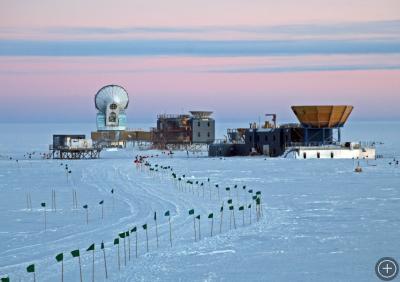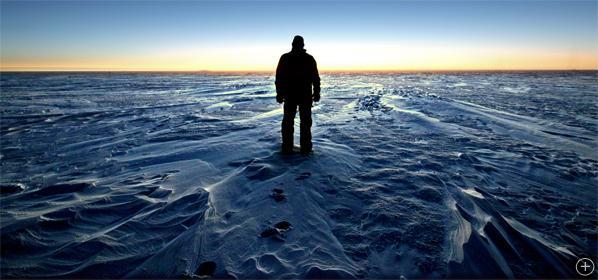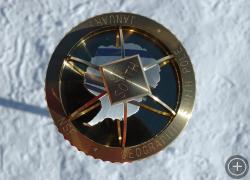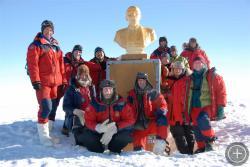The South Pole(s)
When you imagine the South Pole, what do you see? An empty, frozen, white expanse with a red- and white-striped pole sticking out? Actually, there’s more than one South Pole—and none of them exactly fits the above description.
If you think of the earth as a spinning basketball balanced on the tip of a finger, the place where the fingertip touches the ball is what’s called the geographic South Pole. This South Pole—the South Pole—is an imaginary point defined by the earth’s axis of rotation. There’s no red-and-white pole there, just a stake and a sign honoring the first explorers to reach the spot in 1911 and 1912, Roald Amundsen and Robert Scott. Because stake and sign are unavoidably situated on a moving ice sheet that travels about 10 meters (33 feet) per year, repositioning these markers is an annual New Year’s Day tradition.
The geographic South Pole is in a frozen white expanse, but it’s not an empty one. There’s also a major Antarctic outpost there, the Amundsen-Scott South Pole Station, where scientists carry out research ranging from glaciology to astrophysics. Astronomy is the main research focus here, and the station is home to the newly built South Pole Telescope.
A short stroll from the geographic South Pole is a ceremonial South Pole—an actual pole, with, yes, red and white stripes. This pole is in place mainly for photo ops, and it, too, must be moved periodically to keep it within walking distance of the geographic South Pole.

Dark Sector Telescopes at the South Pole Station. Buildings are the Martin A. Pomerantz Observatory (MAPO) on the right, the Background Imaging of Cosmic Extragalactic Polarization (BICEP) telescope in the center, and the South Pole Telescope to the left.
Far, far away is the magnetic South Pole—the South Pole that a compass would point you to. Its current location is 1,800 miles away from the geographic South Pole, in the Southern Ocean, at a latitude of 65° S, so far north that it’s not even in the Antarctic circle. The ocean-going magnetic South Pole is naturally unmarked, but if you happen to be there, you’ll know: Your compass needle will spin aimlessly. This pole moves over time too, albeit for a different reason. The earth’s magnetic field is in constant flux, responding to shifts in the flow of the earth’s liquid metal core.
There is still another South Pole: the pole of inaccessibility. This South Pole is defined as the place in Antarctica that is farthest inland, that is, farthest from any shore. In practice, the pole of inaccessibility is hard to pinpoint, because ice sheets are constantly forming and breaking off from of the continent. In 1958, a Soviet expedition established a Pole of Inaccessility Station, complete with a statue of Lenin and a golden guestbook for visitors to sign. These remain today, though largely buried in snow.



















